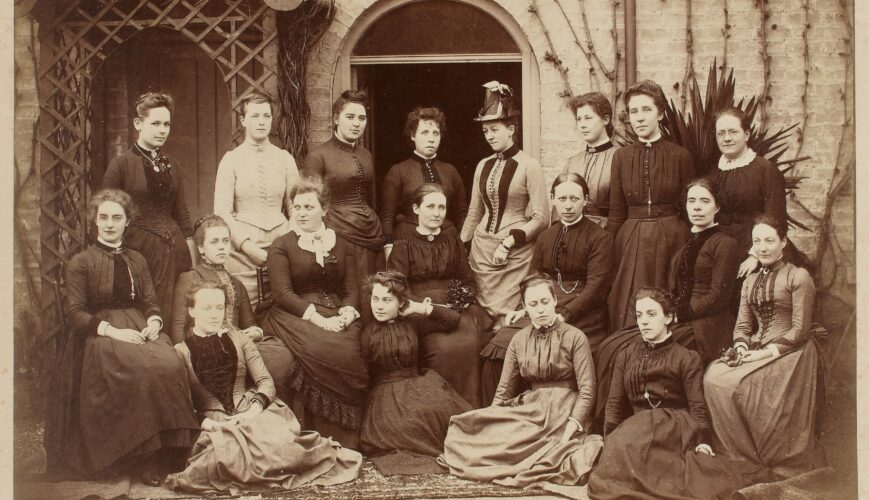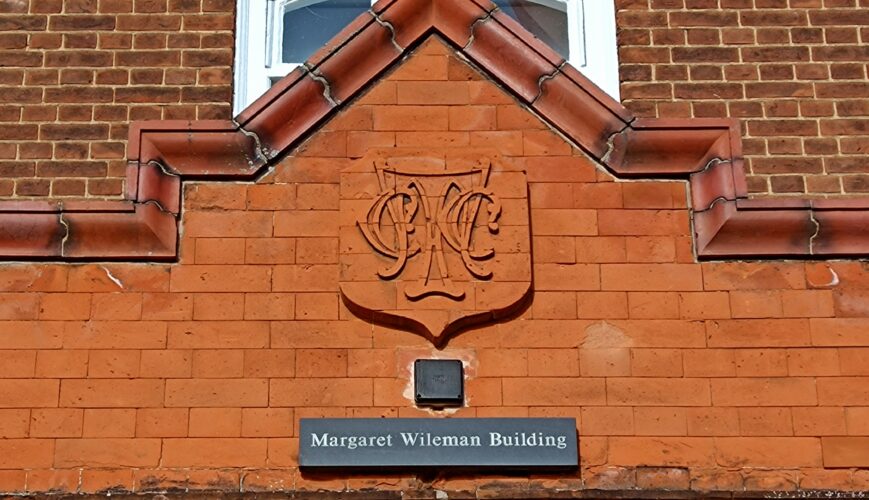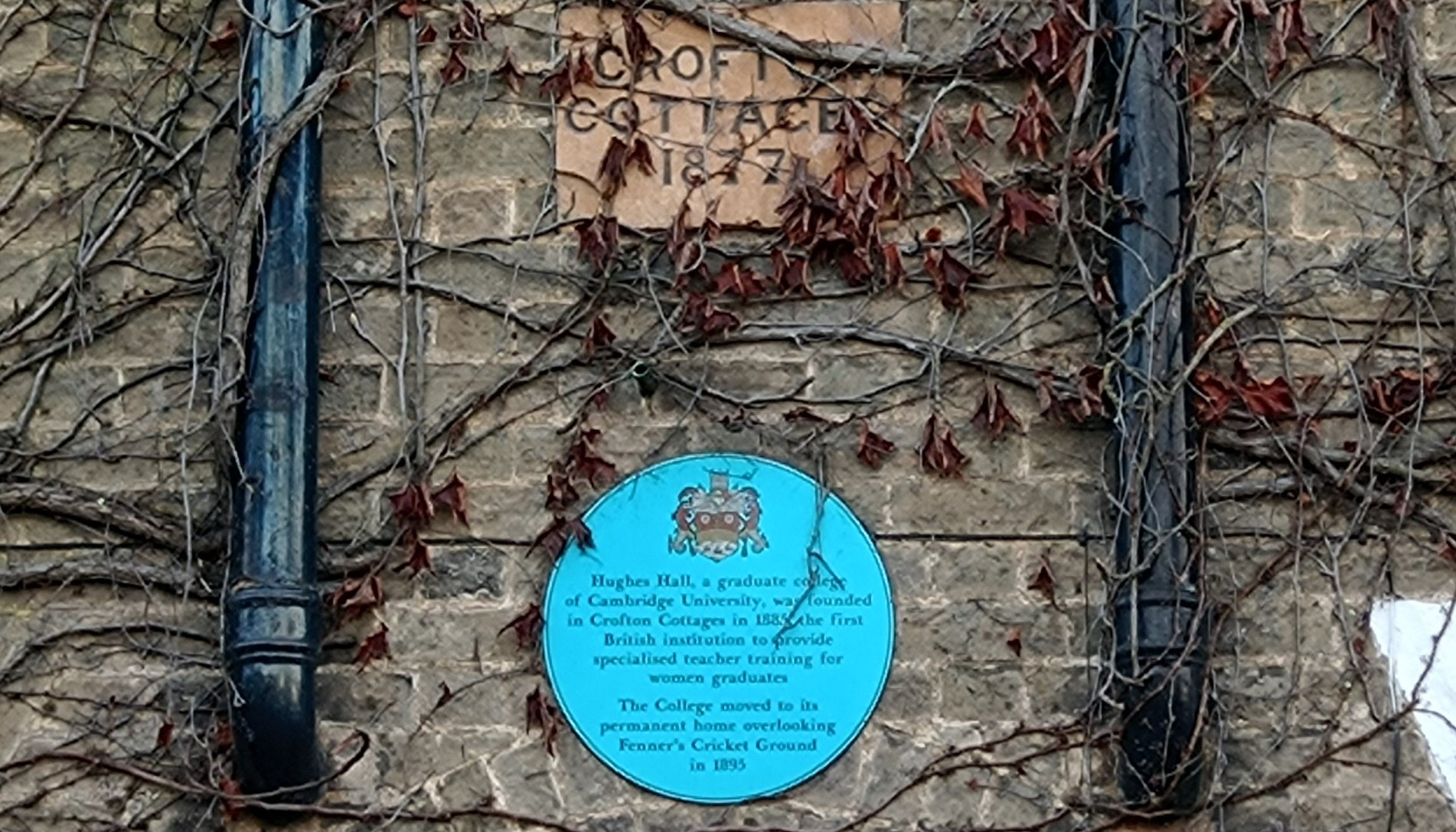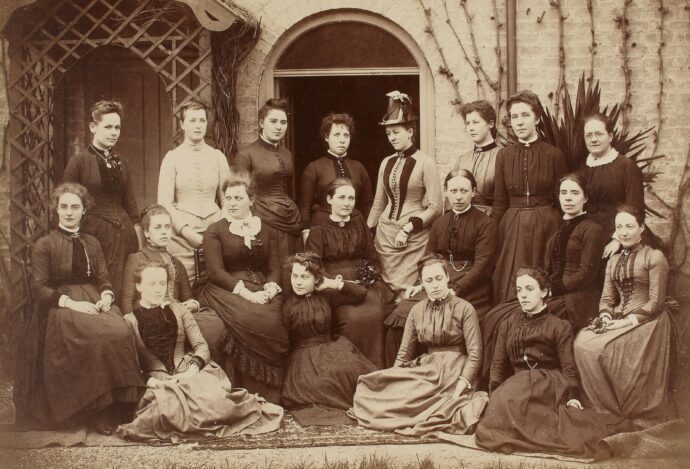Celebrating 138 years’ educating women – and latterly men – from around the world
Founding Hughes Hall: a history of teacher training in Cambridge
With thanks to Jess Hollerton, Library Assistant, for compiling this account and the historical images to help mark 138 years since the inauguration of the College at its founding Committee Meeting at Newnham Terrace in Cambridge on 9th May 1885.
In the late 1800s, opportunities for education were being increasingly extended to girls. Girls’ secondary education was expanding rapidly and Frances Buss, headmistress of North London Collegiate School for girls, found it ever more difficult to find educated women to be secondary school mistresses.
Even where women were educated to a high level in their chosen subjects, they were not trained in the practical skills of teaching, like classroom management or creating curricula, and had little background knowledge of educational theory. This was not uncommon even for male teachers, as attempts to codify teacher training had been largely limited to teachers providing primary education. The general assumption was that if a person had completed a degree (or degree equivalent, for women), then they would be prepared enough to teach a class. Unfortunately, as Frances Buss found, this was not always the case. The need for teacher training had been identified, but there was nowhere to provide it.
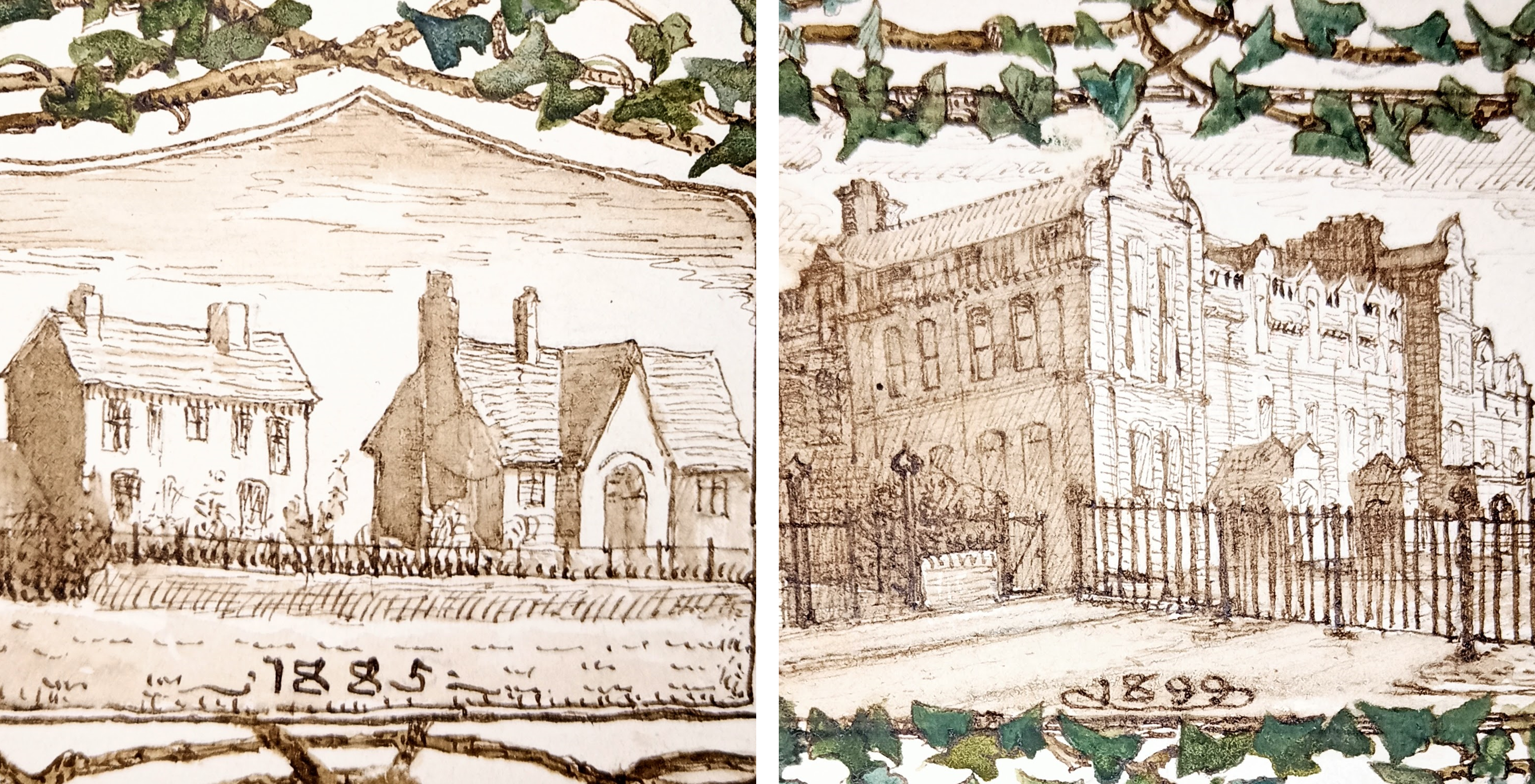
Left: Crofton Cottages, the 1885 home of Cambridge Training College (CTC), from Elizabeth Hughes’ retirement book and, right: the College’s new site on Wollaston Road, from a book given to Elizabeth Hughes by her students on her retirement.
Frances Buss, G. F. Browne, James Ward and Anne Clough began discussions to establish a training college for female teachers in Cambridge. Anne Clough, then-principal of Newnham, agreed to provide Crofton Cottages, two terraced houses in Newnham Croft in the south-west of Cambridge, to be its home. The college moved to its current location on Wollaston Road in 1895. It was decided by this committee that Elizabeth Hughes, a promising Newnham graduate who took first-class honours in Moral Sciences, would be their first choice to run this new venture.
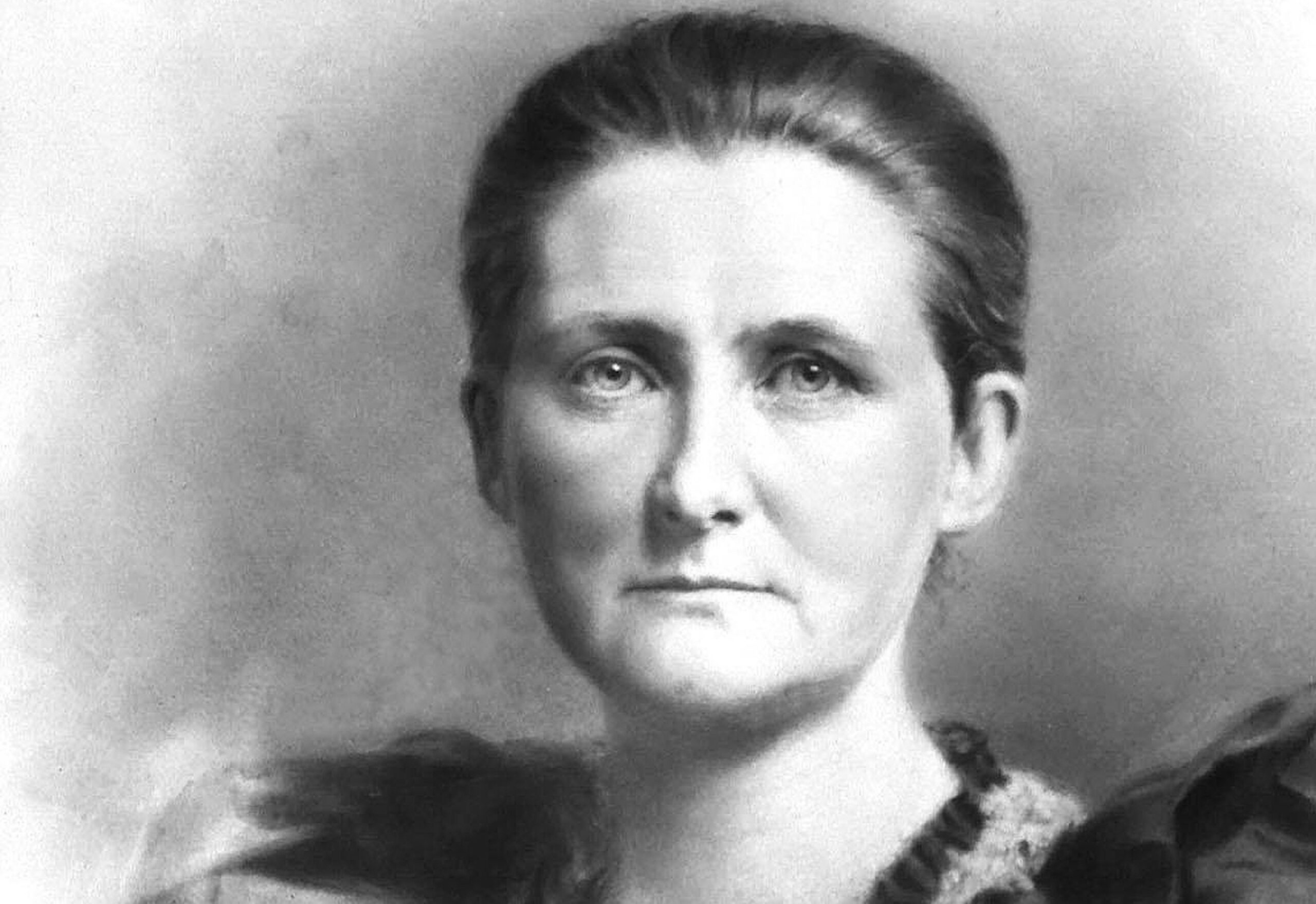
The College’s first Principal, Elizabeth Phillips Hughes (1851-1925) after whom it was renamed on becoming a ‘recognised institution’.
Elizabeth Hughes
Elizabeth Phillips Hughes was an advocate for women’s education before she took up the principalship of Cambridge Training College for Women Teachers (CTC). She was sent to Cheltenham Ladies College in her mid-twenties, and after finishing her studies, she taught there for four years. In 1881, at the age of 30, she began higher education, studying Moral Sciences at Newnham. She was placed first class but, as were the rules of the time, did not receive a degree.
While studying she wrote papers on women’s education for eisteddfods in 1883 and 1884, advocating for higher education opportunities. She attracted the attention of Anne Clough and the others who were looking to launch CTC. With her academic success and her prior experience teaching, she seemed the perfect person to inaugurate the college. She was appointed Principal in 1885, ready for the first intake of students.
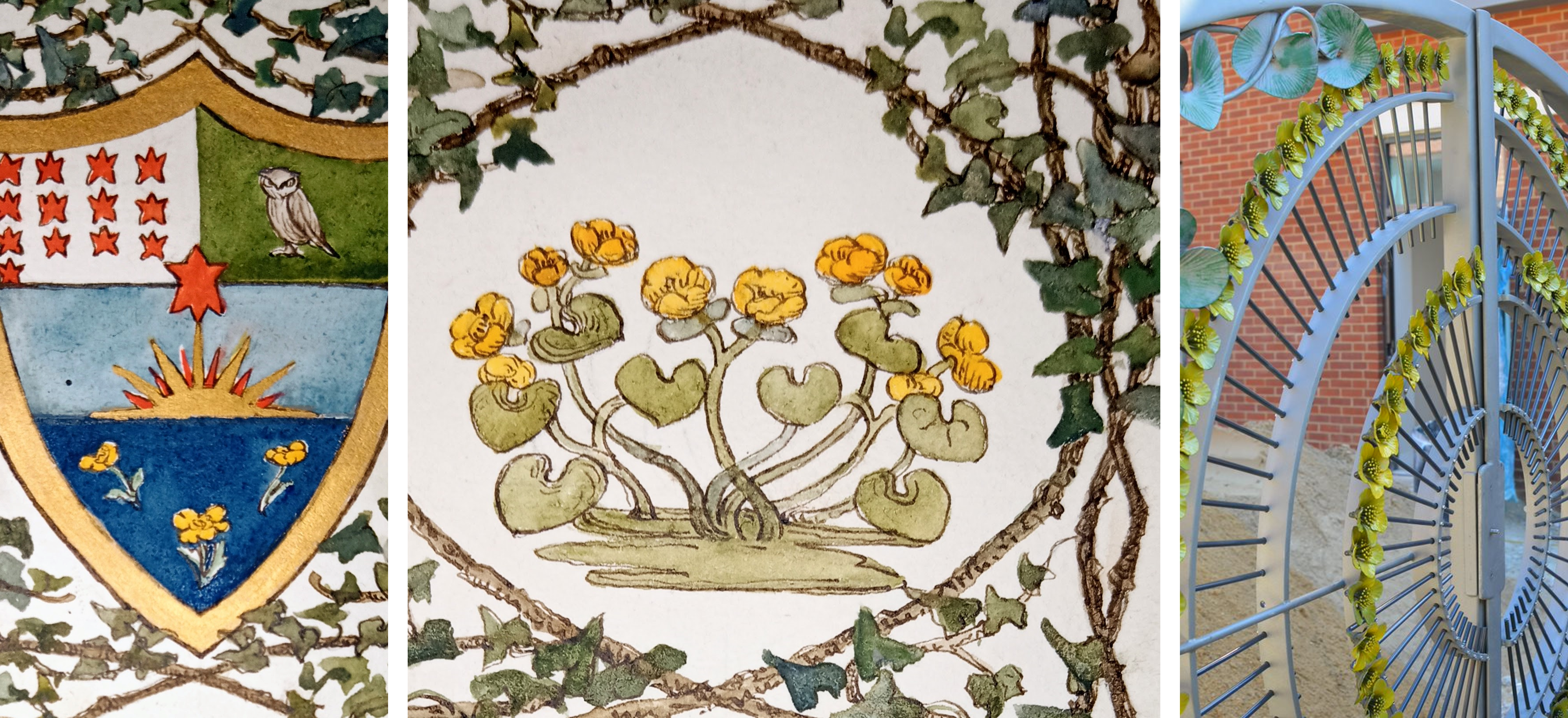
Images of Hughes, from left: early unofficial arms of CTC, drawn and designed by Elizabeth Hughes’ students; Marsh marigolds, common in the Fens, were adopted as an early emblem and included on the arms alongside an owl, a sunrise, and stars representing the years since the college opened; today; Marsh marigolds can be seen on the Gresham gates, one for each of the 116 countries our students have come from.
By the account of one student, M. V. Hughes (then called Molly Thomas), Elizabeth Hughes was well-liked, both in Cambridge and by her students. At its inception, CTC had no library to begin with, so Elizabeth Hughes lent her students her own books. In her autobiography, Molly recollects a moment which happened after she had given a lesson in a local school which went particularly badly. Feeling sore from the criticism she had received, Molly retreated to her room, when:
After a bit there was a tap on the door, and who should appear but Miss Hughes.
‘I was pleased,’ was her amazing remark, ‘that you made such a mess of your lesson.’ Then to my dumb astonishment she added: ‘I have noticed that people who are going to do really well – in almost any walk in life – nearly always start with a failure. I could tell from your notes that your lesson would be a bad one.’
‘Then why didn’t you…?’ I faltered.
‘Why didn’t I tell you to alter them? Well, you were beginning with a definition, instead of leading up to it. You could easily have recast your notes; but don’t you see that then the lesson would have been mine, not yours? Success so gained would have been very bad for you. As it is you have learnt for ever not to begin with a definition. And a lot of other things, too,’ she added smiling. ‘No, I mustn’t sit down; no end of things to do – but I can tell you this, you will make an excellent teacher.’
M. V. Hughes (nee Thomas), ‘A London Family: 1870-1900’ ¹
When her first class of students left, they all chipped in to buy her an oak chest. She sent them a thank you note which read:
My dear Furies, you may rest assured that that chest shall be the last thing that goes to the pawnshop. It shall stand in my room as a memento of that happy year which I so much dreaded, but which (thanks to you) I have so much enjoyed.
The First Year, 1885
In 1885, Cambridge Training College for Women Teachers saw its first intake of students – 14 young women between the ages of 19 and 34. The college was staffed by only three people: a maid, a housekeeper and Elizabeth Hughes.
Elizabeth Hughes was the primary lecturer on almost all subjects. The curriculum they were taught was new; while the general topics were set by Cambridge University Teachers’ Training Syndicate, the idea of training teachers at all was still relatively new, and required innovation on her part as to how she would teach. Vital subjects included:
- Elocution
- Psychology
- Moral sciences
- Sanitation
- Classroom management
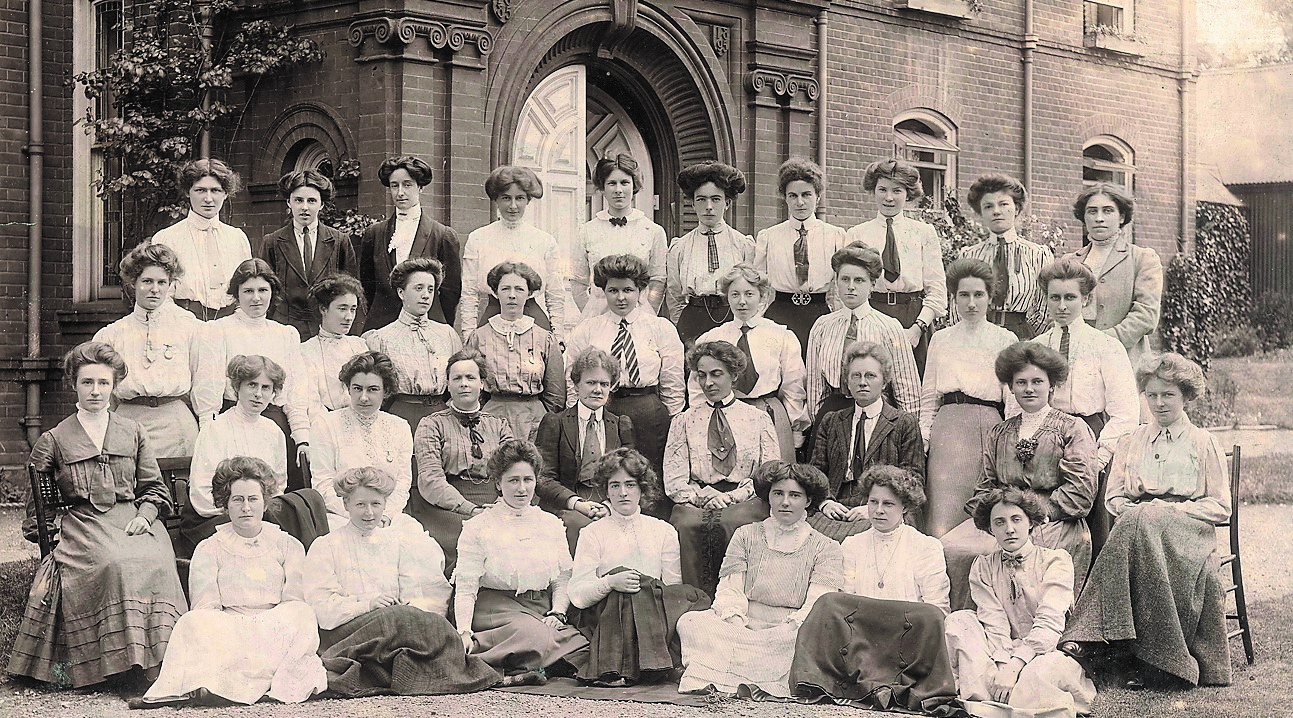
A 1920 photograph, in front of the Margaret Wileman Building – named for the College’s seventh Principal, and inaugurated in 1895.
As well as the more practical teaching skills, Hughes invited guest lecturers – from the University, and old friends from Newnham – to give her students a grounding in a variety of academic subjects which they may be required to teach. Guests included Dr Sophie Bryant, the first active female member of the London Mathematical Society.
Hidden History Around the College
The Pfeiffer Wing
Emily Pfeiffer was a philanthropist and poet, who left her estate on her death to promoting the cause of women’s education. The money that eventually became the Pfeiffer bequest to Hughes Hall was initially intended to be used to establish an orphanage for girls, but due to a legal challenge this was not permitted. The orphanage, which was already built, was sold and the money was passed into various women’s educational institutions, including Hughes Hall.
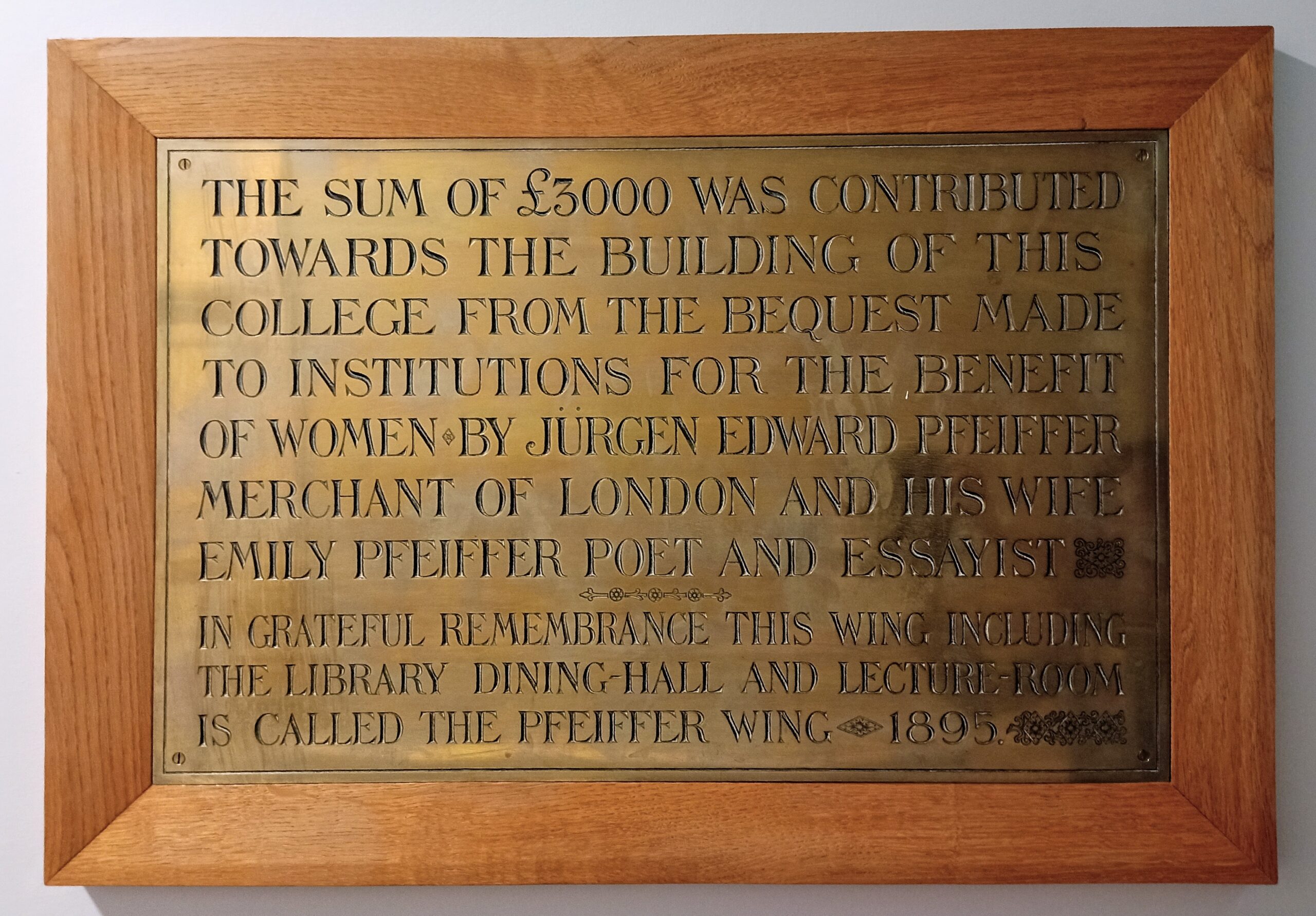
A plaque to Emily Pfeiffer and her husband, also an advocate for women’s education, can be seen in the corridor leading to the Pfeiffer room.
The Emblem of CTC
The building now known as the Margaret Wileman building was the first built to house CTC on its new site. Evidence of this history can be seen above the door of the main entrance, where the initials CTC are still proudly displayed.
Crofton Cottage
The first home of CTC, Crofton Cottage, is still standing in Cambridge. It sits on Merton Street, part of a row of unassuming terraces. Its history as the first home of CTC was commemorated by the city in February 2011 with a Cambridge blue plaque honouring Hughes Hall’s beginnings.
Marsh Marigolds
the early days of CTC, students were encouraged to use some of their free time to take country walks for exercise. A common walk was the Grantchester Grind – either the Little Grind, which took an hour, or the full distance, which took two. Marsh marigolds are native British wildflowers, related to buttercups, and are common in the Fens. They were adopted by students of CTC as an unofficial emblem. It was included on an unofficial crest, alongside an owl, a sunrise, and stars representing the years since the college opened. Today, marsh marigolds can be seen on the Gresham gates, where each marigold represents a different country from which students have come to Hughes Hall. There are currently 116.
The Library of CTC
In a recent stock check of the Library, several uncatalogued books were discovered. They contain the stamp of the library of Cambridge Training College, and an accession number. At the moment, we don’t know when exactly these books were added to the collection, or for how long the library stamp was in use. The only thing we can say for certain is that these books existed at the College before it was renamed to Hughes Hall in 1949.
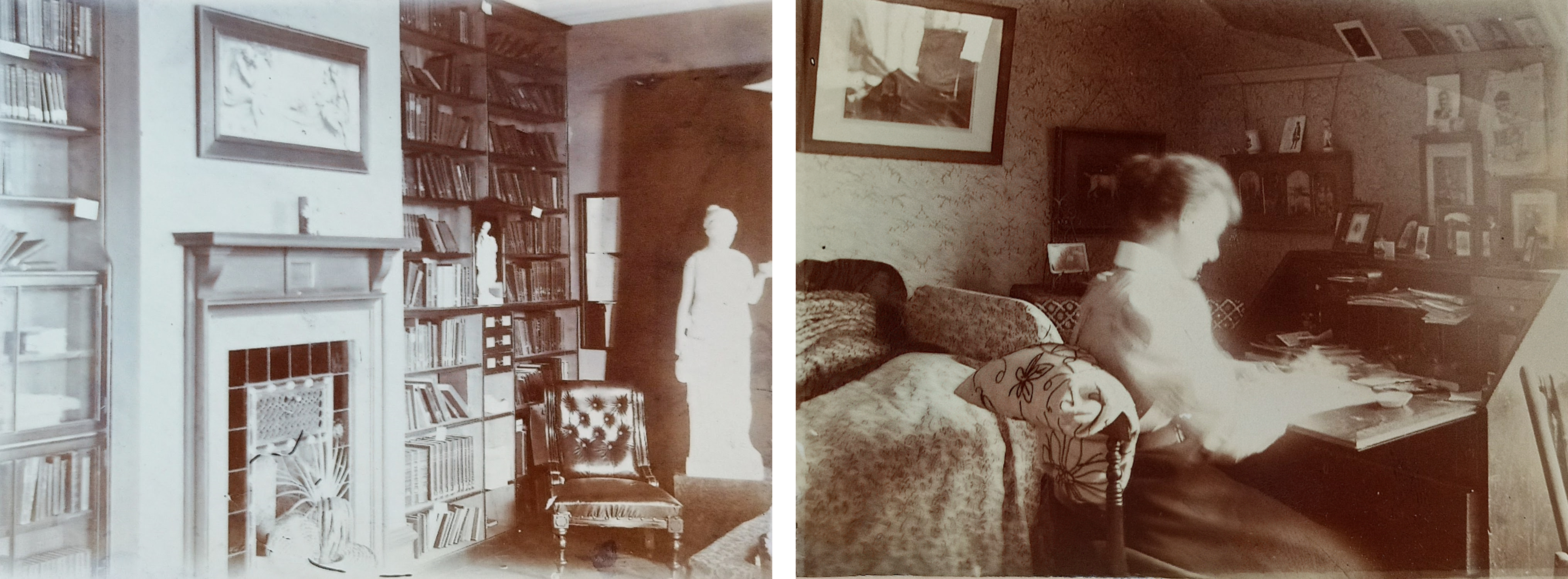
From left: The ‘new’ library at Wollaston Road, now the Pfeiffer Room; and a student, Miss Swindale, studying in her room in the late 1890s.
It is interesting to see the sorts of books that were in the library prior to this date – there is a strong focus on both teaching and women’s history, which point to the early interests of the college. For a full list of the CTC books discovered and catalogued so far please see the Cambridge Training College Library Collection.

There is at present a gender balance within our student community at all levels of the College of which Elizabeth Hughes would have approved.
Sources
- Hughes Hall archives
- Hughes Hall magazines and the work of Jean Lambert, College Archivist
- Bottrall, Margaret, Hughes Hall, 1885-1985 (Cambridge: Rutherford Publications, 1985)
- Hirsch, Pam, and Mark McBeth, Teacher Training at Cambridge: the Initiatives of Oscar Browning and Elizabeth Hughes (London: Woburn Press, 2004)
- Hughes, M. V., A London Family, 1870-1900: a trilogy (Oxford: Oxford University Press, 1946)
- Martin, Ged, Hughes Hall, Cambridge: 1885-2010 (London: Third Millenium, 2011)
- ¹One of the best sources for learning about the early days of Hughes Hall, this book was written by M. V. Hughes (nee Molly Thomas), one of the first 14 students of Cambridge Training College. Chapter VI of her autobiography describes her time spent at CTC and the atmosphere of those early days. Her writing is funny and engaging, and well worth reading. One of our Library copies is stamped with the CTC library stamp, showing that it comes from the pre-1949 collection.
- For more on the history of Hughes Hall, see: https://www.hughes.cam.ac.uk/about/history/
9.5.23


